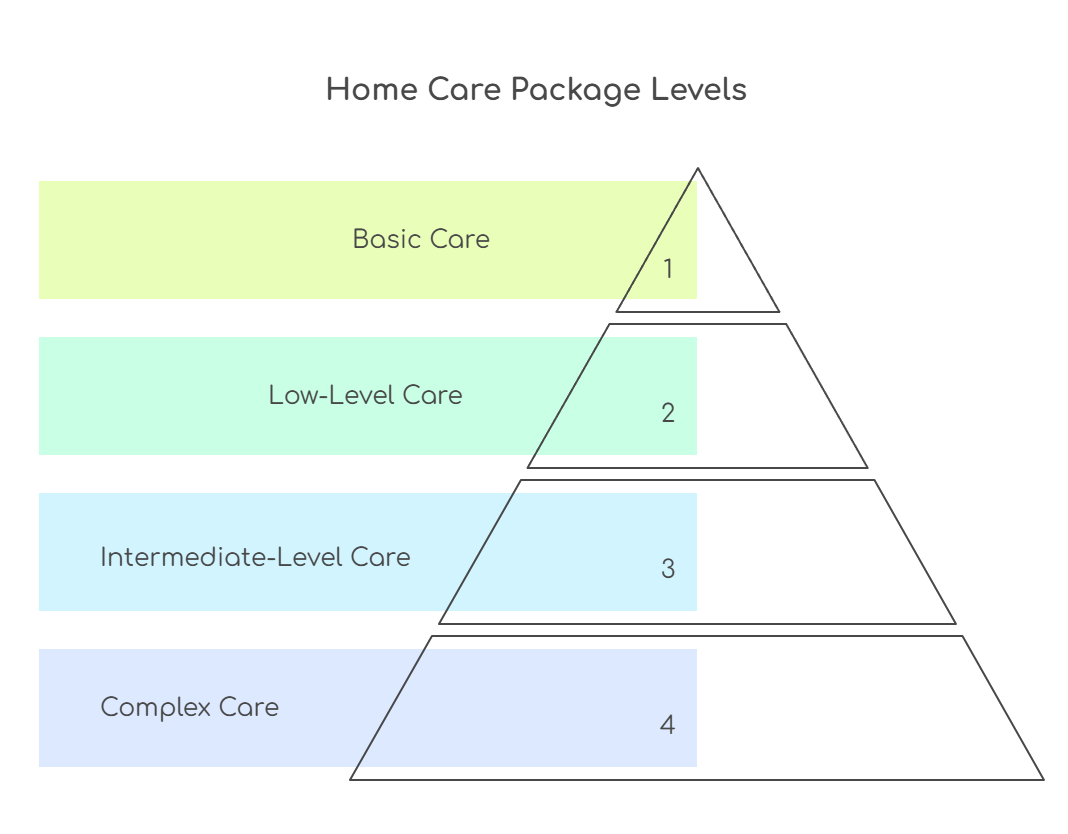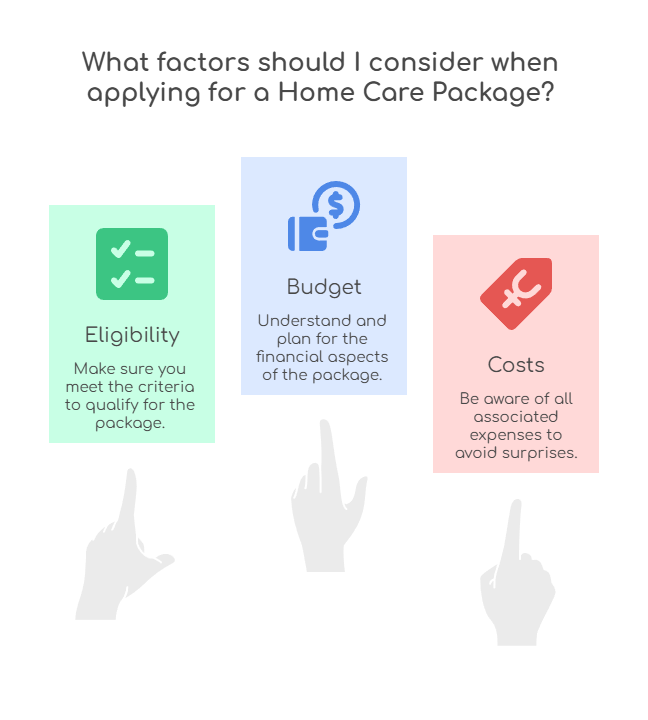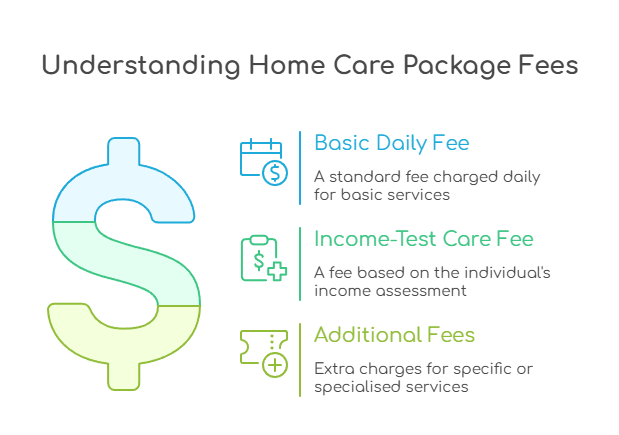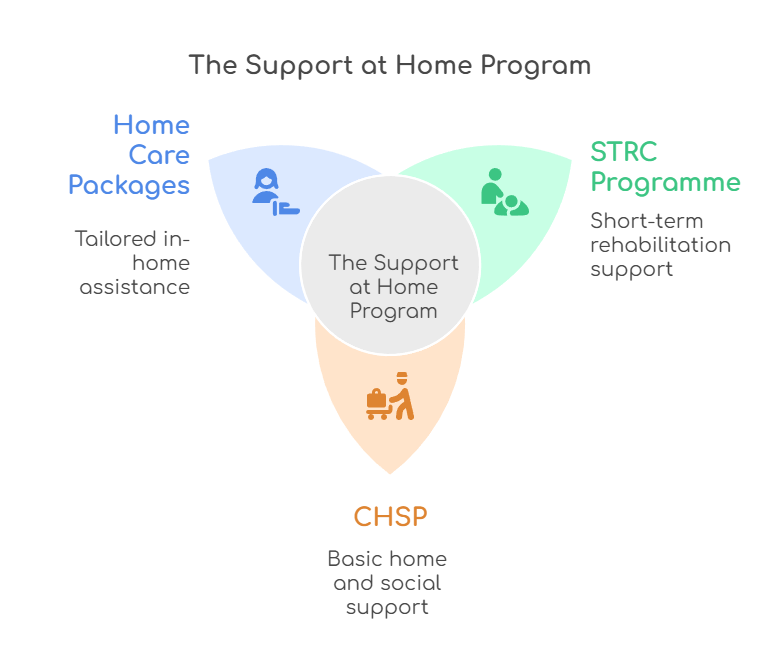By
Haisey Home Care
Updated on: July 14, 2025
•
x min read
Read this article to learn about the four levels of Home Care Packages in Australia, how to apply, what each includes, and how they support aging at home.

Summary: The Home Care Package program in Australia includes four levels of care. They're tailored to an older person's assessed needs, ranging from basic to high-level support. There are almost 1,000 Home Care Package providers operating in Australia. Despite the availability of these packages, demand continues to outpace supply. The government's solution to this issue is the Support at Home Program, which is set to begin on November 1, 2025.
Home Care Packages provide a precious lifeline to elderly Australians.
Through this government-funded program, they can receive the support they need in the comfort of their own home.
But how many Home Care Packages are there in Australia?
There are four levels of Home Care Packages, and almost 1,000 HCP providers in Australia.
Each level is based on the degree of aged care support required, ranging from low-level to high-level needs.
In this article, we will talk about the four levels of aged care and what they cover.
We will also talk about the future of Home Care Packages, which is the Support at Home Program.
Home Care Packages are a part of Australia's aged care program. It's a common misconception that there are different Home Care Packages.
Rather, there are different Home Care Package levels, and they include:

If you meet the eligibility criteria, you can apply for Home Care Packages.
Once the application process is complete, you will be assigned to a Home Care Package level.
Remember, you can't choose your Home Care Package level. It will rather be assigned to you. Your level will depend on your eligibility and care needs.
Level 1 is for basic care needs.
It's for older Australians who are generally independent but need occasional support with daily tasks.
You may be starting to find certain household activities difficult. But you don't yet need ongoing personal or medical care.
Typical Level 1 services include:
Level 2 is for those who need a little more support than what Level 1 offers.
It supports people who need more regular help to manage at home.
They might have mild health concerns or limited mobility and benefit from aid a few times a week.
Typical Level 2 services include:
Level 3 is for elderly people who need a substantial level of support to remain at home.
Level 3 is for people with moderate to complex needs.
They may be managing ongoing health conditions, have limited strength or mobility, or need nursing care at home.
Typical services include:
Level 4 is for complex care needs. This usually includes complex health conditions and significant support requirements.
It's for those who need full-time support similar to residential aged care.
Typical services include:
Here's how you can apply for a Home Care Package:
Even though you can't choose your HCP level, you have the freedom to choose your provider.
If you don't like the provider you've chosen, you can always change providers.
When applying for Home Care Packages, there are three things you need to take into account. Those include:

To be eligible for a Home Care Package, you must be:
When it comes to age requirements, you must be older than 65.
The age limit is 50 or older for Aboriginal or Torres Strait Islander people.
If you're a younger person with disabilities, you must be older than 16. Younger people with disabilities can apply for the NDIS if they are not eligible for Home Care Packages.
You can also apply for the Commonwealth Home Support Programme (CHSP) if you need short-term care.
The eligibility is determined through an assessment process conducted by an Aged Care Assessment Team (ACAT).
It considers physical, medical, cognitive, and psychological needs.
The Australian Government provides funding for Home Care Packages. This is also known as your Home Care Package budget.
This funding goes directly to your Home Care Package provider. It's then allocated for different care services you might need.
Your HCP budget covers services that:
Each Home Care Package level has a different amount of funding associated with it.
Level 1 comes with the least amount of funding. Level 4 comes with the highest amount of funding.
The funding is provided on a consumer-directed care basis.
This means that the individual has more control and choice over how the funds are spent to meet their specific needs.
Home Care Packages are funded by the government. But that does not mean applying for this program is entirely free.
You are expected to provide a contribution, which includes:

The basic daily fee is the same for anyone who applies because it's determined by the Australian Government.
An income-tested care fee is means-tested.
It determines if you need to make a contribution and, if so, how much. There are annual and lifetime limits on how much you will be expected to pay.
Additional fees cover any extra care or services that are not covered by your Home Care Package.
The amount you will be expected to pay depends on your financial situation. It also depends on your HCP level and the type of care you need.
This fee estimator will give you an idea of what level of contribution you may be expected to make.
According to this 2024 report by the Australian Government, 289,582 people had access to a Home Care Package (HCP).
The exact number of people actively receiving a package was 277,794 Australians. Another 11,788 people were assigned a package and were considering whether to take up the offer.
This report also states that more people are applying for Home Care Packages.
There are a few reasons for this increase. One of them is the country's ageing population.
The other is the strong preference among older adults to receive care at home rather than in residential facilities.
Because of this growing issue, many people who have been approved for an HCP are put on a waiting list.
You can wait as little as three months or even more than a year. It depends on the HCP level you've been assigned to.
For example, if you're Level 1, you might have to wait for three to six months. But if you're Level 4, expect to wait at least 12 months before receiving your package.
As of December 31, 2024, there were 82,960 people waiting for an HCP at their approved level.
A solution is in the works for this issue, and it's the upcoming Support at Home Program.
The Support at Home Program is going to combine these three programs:

Note that not all three of these programs will be merging into the Support at Home Program at once.
Home Care Packages and the STRC Programme are set to transition on November 1, 2025. The CHSP isn't set to merge with these two until July 1, 2027.
Those who will be receiving an HCP at that time will automatically transition into the new program.
The same goes for your HCP budget. Your funding level will remain consistent, and any unspent funds will carry over.
You'll have access to a broader range of services, equipment, and home modifications under the new program.
There are four different levels of support available. They depend on the person's long-term care needs.
Level 4 provides the highest level of funding. It caters to users with the most complex and challenging needs.
After you complete the assessment, you will have to wait three months to a year before you hear back from them. Those with more urgent needs will be contacted and put in the program faster.
There are almost 1,000 approved HCP providers in Australia, including Haisey Home Care.
There are two different types of Home Care Package management systems. These include the self-managed and provider-managed systems.
With self-managed packages, it's your job to choose support workers and schedule those services.
Provider-managed packages put this responsibility in the hands of a service provider.
There are four Home Care Package levels in Australia, and almost a thousand home care providers.
This process may seem complicated, but it will be well worth the effort when approved.
If you're looking for a home care provider, Haisey Home Care can meet all your needs.
We are an approved HCP provider, striving to provide high-quality care to all our clients.
Of course, if you have any other questions, please contact us.
{{cta}}
Chat with us to learn more about how we can help you. Book in a free, no obligation in-home consultation.
